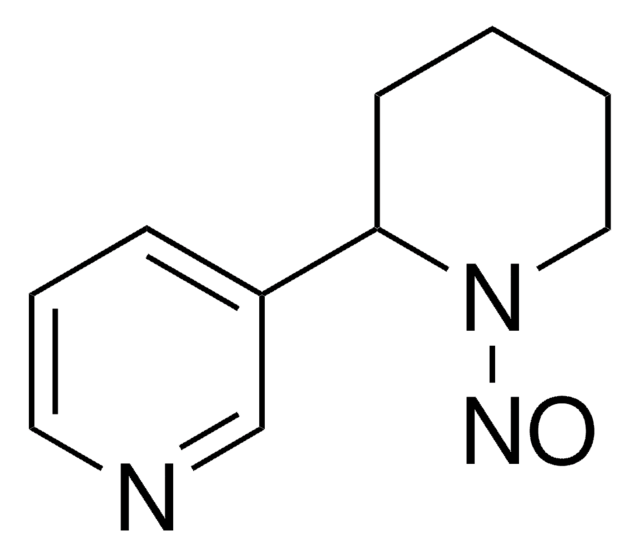93595
Trypanblau -Lösung
0.4%, for microscopy
About This Item
Empfohlene Produkte
Qualität
for microscopy
Qualitätsniveau
Form
liquid
Haltbarkeit
limited shelf life, expiry date on the label
Konzentration
0.4%
Farbe
blue to very dark blue
Dichte
1.007 g/mL at 20 °C
εmax
1.4 at 603 nm in methanol
Anwendung(en)
diagnostic assay manufacturing
hematology
histology
Lagertemp.
room temp
SMILES String
[Na+].[Na+].[Na+].[Na+].Cc1cc(ccc1N=Nc2c(O)c3c(N)cc(cc3cc2S([O-])(=O)=O)S([O-])(=O)=O)-c4ccc(N=Nc5c(O)c6c(N)cc(cc6cc5S([O-])(=O)=O)S([O-])(=O)=O)c(C)c4
InChI
1S/C34H28N6O14S4.4Na/c1-15-7-17(3-5-25(15)37-39-31-27(57(49,50)51)11-19-9-21(55(43,44)45)13-23(35)29(19)33(31)41)18-4-6-26(16(2)8-18)38-40-32-28(58(52,53)54)12-20-10-22(56(46,47)48)14-24(36)30(20)34(32)42;;;;/h3-14,41-42H,35-36H2,1-2H3,(H,43,44,45)(H,46,47,48)(H,49,50,51)(H,52,53,54);;;;/q;4*+1/p-4
InChIKey
GLNADSQYFUSGOU-UHFFFAOYSA-J
Suchen Sie nach ähnlichen Produkten? Aufrufen Leitfaden zum Produktvergleich
Verwandte Kategorien
Allgemeine Beschreibung
Anwendung
- Es wird routinemäßig für Lebensfähigkeitstests für verschiedene Zelltypen verwendet, zum Beispiel tiefgefrorene Spermien und Aortenmuskelzellen, die Antimykotika ausgesetzt sind.
- Trypanblau wird bei Van-Gieson-Verfahren als Kollagenfärbung eingesetzt
- Bei der Färbung von Amyloid gilt Trypanblau bei Puchtler-Bennhold-Färbungen als blaue Alternative zu Kongorot.
- Wird als fluoreszierender Tracer von Zellpopulationen in der Embryologie verwendet
- Dient als Tumorpromotor, der die Permeabilität von lysosomalen Membranen moduliert
Biochem./physiol. Wirkung
Physikalische Form
Signalwort
Danger
H-Sätze
Gefahreneinstufungen
Carc. 1B
Lagerklassenschlüssel
6.1D - Non-combustible acute toxic Cat.3 / toxic hazardous materials or hazardous materials causing chronic effects
WGK
WGK 3
Flammpunkt (°F)
Not applicable
Flammpunkt (°C)
Not applicable
Persönliche Schutzausrüstung
Eyeshields, Gloves, type ABEK (EN14387) respirator filter
Choose from one of the most recent versions:
Besitzen Sie dieses Produkt bereits?
In der Dokumentenbibliothek finden Sie die Dokumentation zu den Produkten, die Sie kürzlich erworben haben.
Kunden haben sich ebenfalls angesehen
Protokolle
Learn how to perform cell migration assays in vitro using Millicell® hanging cell culture inserts and the suspension T-cell lines Jurkat and primary CD4+ cells. Monitor migration by flow cytometry and EZ-MTT assays.
Unser Team von Wissenschaftlern verfügt über Erfahrung in allen Forschungsbereichen einschließlich Life Science, Materialwissenschaften, chemischer Synthese, Chromatographie, Analytik und vielen mehr..
Setzen Sie sich mit dem technischen Dienst in Verbindung.





![Benzo[a]pyren ≥96% (HPLC)](/deepweb/assets/sigmaaldrich/product/structures/253/820/be96d879-1811-46c0-8f11-612019691c2d/640/be96d879-1811-46c0-8f11-612019691c2d.png)





